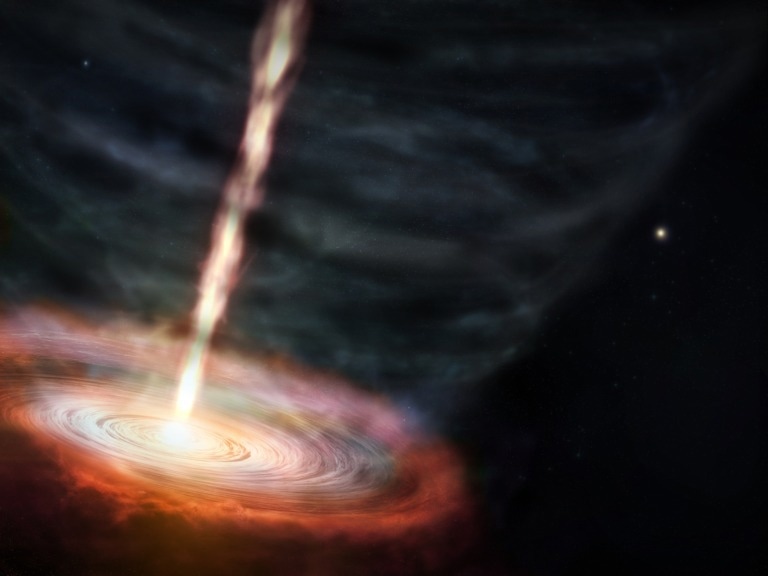The special hydrogen radio recombination lines on MWC 349A have been utilized by researchers to discover hidden collimated jets.

Image Credit: Credit: ALMA (ESO/NAOJ/NRAO), M. Weiss (NRAO/AUI/NSF)
While making use of the Atacama Large Millimeter/submillimeter Array (ALMA) to study the masers near oddball star MWC 349A, researchers suddenly discovered a previously unseen jet of material emerging from the gas disk of the star at incredibly high speeds.
Further, they believe the jet has been caused by powerful magnetic forces encircling the star. The breakthrough could help scientists to understand the nature and progress of massive stars and how hydrogen masers are developed in space.
The new remarks were presented in a press conference at the 241st meeting of the American Astronomical Society (AAS) located in Seattle, Washington.
Situated around 3,900 light-years away from Earth in the constellation Cygnus, MWC 349A’s special features make it a flash point for scientific research in infrared, optical, and radio wavelengths.
The massive star—which is approximately 30 times the mass of the Sun— is known to be one of the brightest radio sources present in the sky, and one of only a handful of objects familiar to have hydrogen masers.
Such masers help amplify microwave radio emissions, thereby making it simpler to study processes that are normally too small to be seen by the naked eye. It is this special feature that enabled researchers to map MWC 349A’s disk elaborately for the first time.
A maser is like a naturally occurring laser. It’s an area in outer space that emits a really bright kind of light. We can see this light and trace it back to where it came from, bringing us one step closer to figuring out what’s really going on.
Sirina Prasad, Study Primary Author and Undergraduate Research Assistant, Center for Astrophysics | Harvard & Smithsonian, National Radio Astronomy Observatory
The research group was able to make use of the masers to reveal the earlier hidden structures in the star’s immediate environment. This was made possible by leveraging the resolving power of ALMA’s Band 6 which has been developed by the US National Science Foundation’s National Radio Astronomy Observatory (NRAO).
We used masers generated by hydrogen to probe the physical and dynamic structures in the gas surrounding MWC 349A and revealed a flattened gas disk with a diameter of 50 au, approximately the size of the Solar System, confirming the near-horizontal disk structure of the star. We also found a fast-moving jet component hidden within the winds flowing away from the star.
Qizhou Zhang, Project Principal Investigator and Senior Astrophysicist, Center for Astrophysics | Harvard & Smithsonian
The observed jet is emitting material away from the star at a boiling 500 km/second. That is quite similar to traveling the distance between San Diego, California, and Phoenix, Arizona in the exact blink of an eye.
According to scientists, it is likely that a jet moving at a speed like this is being launched by a magnetic force. In the event of MWC 349A, that force could be a magnetohydrodynamic wind—a kind of wind whose movement has been dictated by the interplay that happened between the magnetic field of the star and gases present in its encircling disk.
Our previous understanding of MWC 349A was that the star was surrounded by a rotating disk and photo-evaporating wind. Strong evidence for an additional collimated jet had not yet been seen in this system.
Sirina Prasad, Study Primary Author and Undergraduate Research Assistant, Center for Astrophysics | Harvard & Smithsonian, National Radio Astronomy Observatory
Prasad continued, “Although we don’t yet know for certain where it comes from or how it is made, it could be that a magnetohydrodynamic wind is producing the jet, in which case the magnetic field is responsible for launching rotating material from the system.
Prasad concluded, “This could help us to better understand the disk-wind dynamics of MWC 349A, and the interplay between circumstellar disks, winds, and jets in other star systems.”